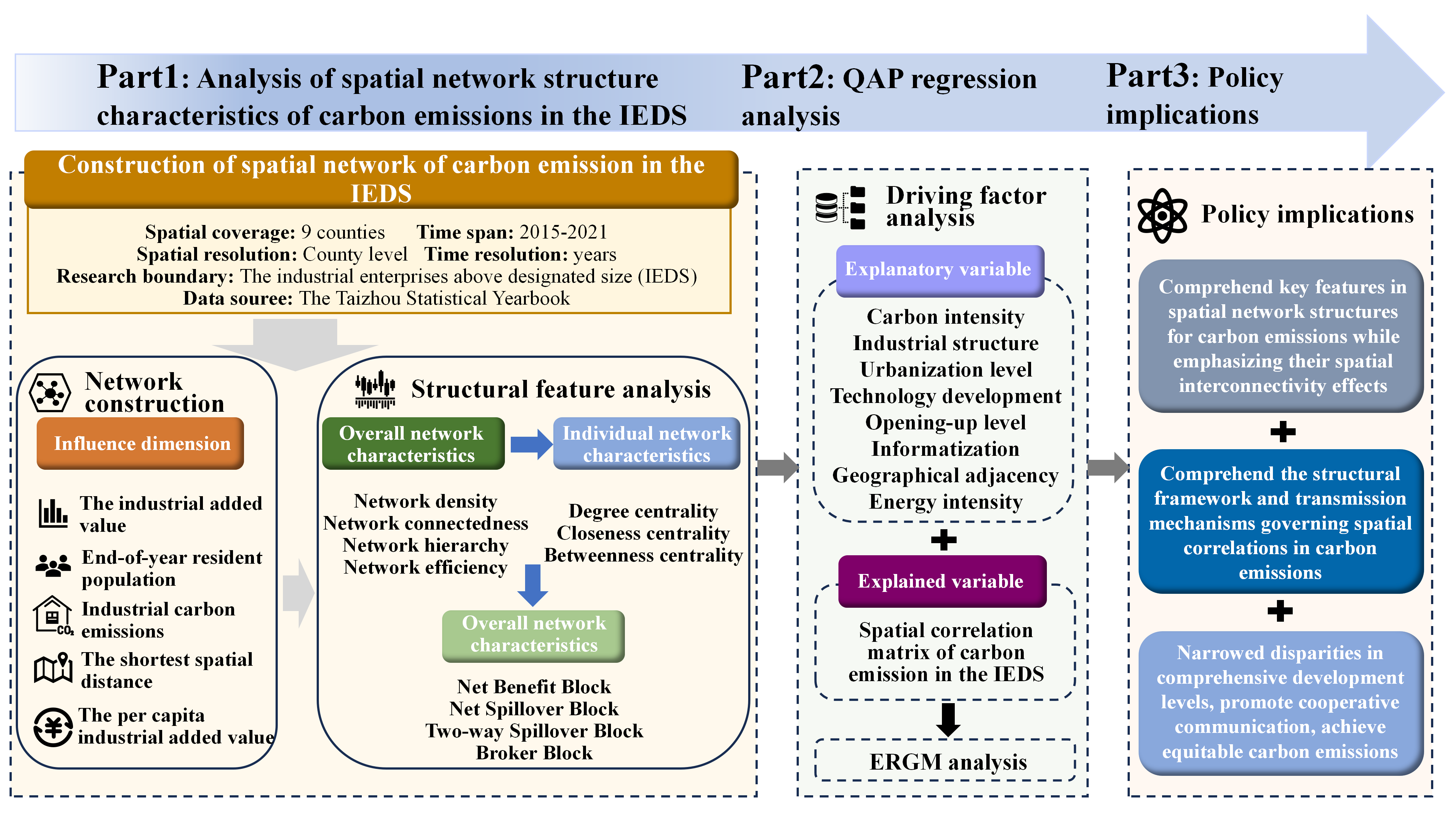
To support China's strategic goals of achieving carbon peaking and carbon neutrality, this study explores the spatial network structure characteristics of industrial carbon emissions and their significance in promoting energy conservation and emission reduction in the industrial sector. Taking Taizhou City in Zhejiang Province as a case study, we construct a spatial correlation network of carbon emissions based on data from industrial enterprises above the designated size (IEDS) across nine counties from 2015 to 2021, and apply an improved gravity model, integrated with social network analysis, to equantify inter-county linkages and identify key driving factors. Our results indicate that: (1) the spatial network correlation degree of IEDS carbon emissions remained at 1 throughout the study period, whereas network density gradually increased and network hierarchy as well as efficiency steadily decreased; (2) Economically advanced eastern counties—Yuhuan, Wenling and Jiaojiang—form the network core and exert marked influence on spatial carbon-emission linkages, whereas the less-developed counties of Sanmen, Tiantai and Xianju lie at the periphery with limited impact; (3) Based on network positions, Jiaojiang, Xianju, Wenling, and Linhai are classified as 'Broker Block', Sanmen and Tiantai as 'Net Spillover Block', Huangyan as 'Two-way Spillover Block', and Luqiao and Yuhuan as 'Net Benefit Block'; (4) The ERGM analysis revealed a hierarchical influence structure with five factors showing extremely high significance (p<0.001). Carbon emission intensity emerged as the strongest negative inhibitor (β = -18.245), while energy intensity showed the strongest positive effect (β = 14.567) . This research reveals that while industrial carbon emissions exhibit significant spatial correlations across regions, there remains considerable potential for strengthening inter-regional coordination, suggesting the need to establish cross-regional collaborative emission reduction mechanisms to promote industrial energy conservation and emission reduction.
Total file downloads: 16